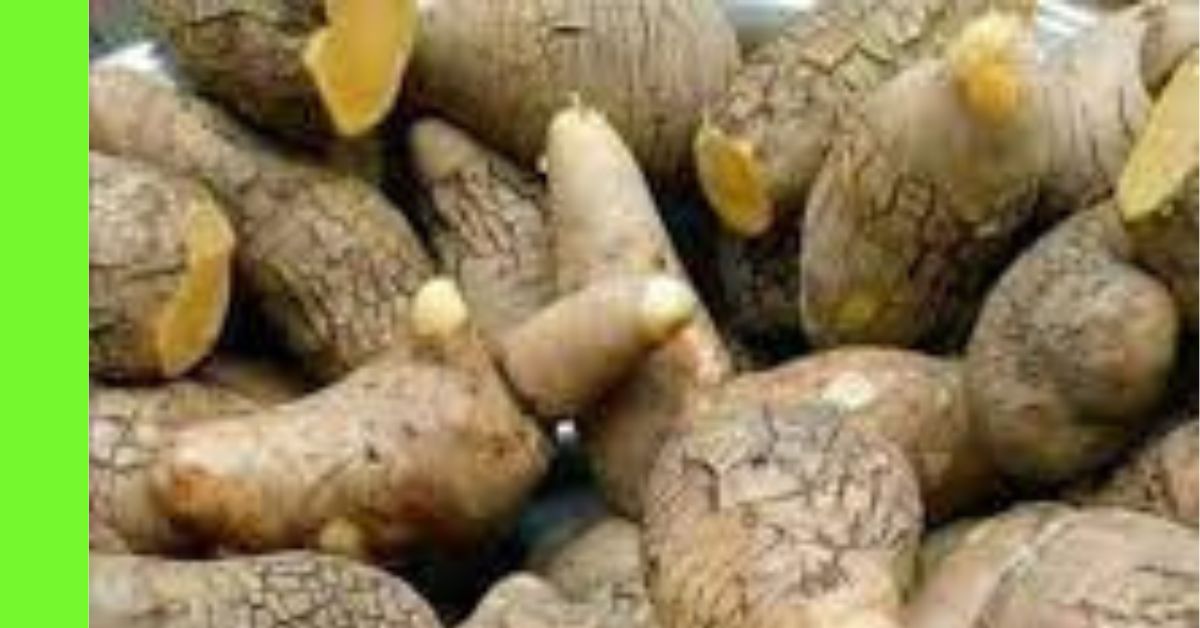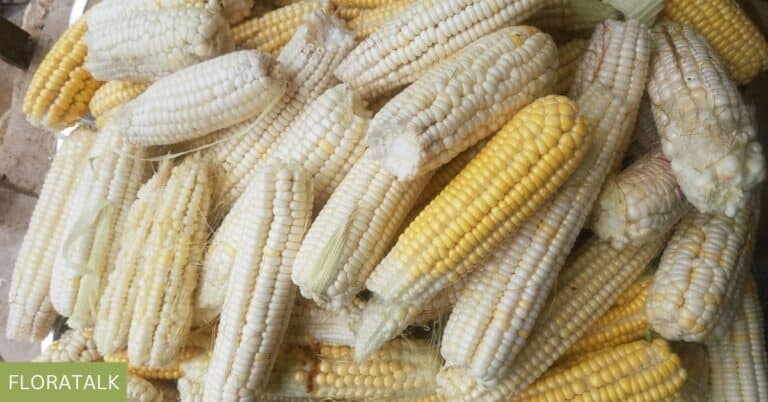Three Leaved Yam: Simple Facts, Uses And Benefits

Three-leaved yam is one of the types of yam found in Nigeria.
Some of the yams grown in Nigeria are;
- White yam (Dioscorea rotundata)
- Yellow yam (Dioscorea cayennensis)
- Water yam (Dioscorea Alata)
- Aerial yam (Dioscorea bulbifera)
Three-leaved yams are less common than white and yellow yams, a staple food in the country.
This yam also belongs to the Dioscorea family and has the botanical name Dioscorea dumetorum.
It’s also known by other names such as bitter yam, cluster yam, and trifoliate yam.
It’s indigenous to sub-Saharan Africa, with Nigeria, Benin, and Ghana being among the tropical West African countries where it is most prevalent.
In Nigeria, it is called by different names depending on the tribe,
It is known as ji ònà in the Igbo language, èsúrú in the Yoruba language, ánêm in the Ibibio language and Kosanrogo in the Hausa language
It’s called mbá in the Duala language (Cameroon).
Take caution not to confuse wild yam (Dioscorea villosa), aerial or air potato (Dioscorea bulbifera) with three-leaved yam (Dioscorea dumetorum).
Sometimes, all three are referred to as bitter yams.
Description of Three Leaved Yam
Dioscorea dumetorum has distinctive trifoliate leaves, similar to the Indian three-leaf yam Dioscorea hispida.
There are three to seven veins per leaflet on each leaf.
The vine features distinctive twining to the left and ridged and rising prickles.
D. dumetorum climbs up shrubs to a maximum height of roughly 7 metres (23 ft).
From the subterranean tubers, the vines develop every year.
Deeply lobed, D. dumetorum tubers grow in bunches below the soil’s surface.
The bitter yam has brown flowers.
Whereas female flowers are grouped in spikes, male flowers are organized in intricate branched patterns.
The seeds are oblong-shaped, winged capsules.
Because of the high concentration of the alkaloids dihydrodioscorine and dioscorine, it is extremely dangerous in its wild form.
Nonetheless, West Africa has edible varieties that are not poisonous.
For instance, Benin has fifteen known non-toxic indigenous forms of D. dumetorum.
It has a fleshy, potato-like root called a tuber utilized as medicine or sustenance during famines.
Nutritional Information of Three Leaved Yam
Proximate composition of 100 g three-leaved yam.
| Ash | 2.17 – 7.79 % |
| Crude Protein | 0.19 – 10.3 % |
| Crude Fiber | 0.82 – 5.65 % |
| Crude Fat | 0.37 – 3.65 % |
| Starch | 17.0 – 63.34 % |
| Moisture | 64.3 – 90.2 % |
Mineral composition of three-leaved yam mg/100g
| Potassium | 670 – 772 mg |
| Sodium | 72.5 – 77.5 mg |
| Phosphorus | 269 – 286 mg |
| Calcium | 27.5 – 29.5 mg |
| Magnesium | 61.5 mg |
| Copper | 0.10 mg |
| Iron | 2.0 – 2.5 mg |
| Zinc | 5.8 mg |
| Manganese | 2.5 – 2.65 mg |
Source: National Library of Medicine
Uses Of Three Leaved Yam
For Food
You can eat three-leaf yams boiled, roasted, fried or baked.
It’s used to make yam porridge,
The tuber is also processed into flour, which thickens soups, stews, and sauces.
It’s a nutritious food with vitamins, minerals and dietary fibre.
The tuber has a higher amount of protein compared to the other types of yams.
For Agricultural Uses
Soil improvement and crop rotation: The tuber’s immersed root system improves soil fertility and structure.
Animal feed: the leaf and tuber are used as livestock feed.
For Pharmaceutical and Medicinal Uses
Pharmaceutical: The compounds found in three-leaved yam are considered for pharmaceutical uses because of their bioactive properties.
Medicine: is used in traditional medicine to cure several ailments
For Industrial Uses
Starch Production: Three-leaved yams have a high starch content, which is extracted and used in various industries, such as the food and textile industry. It also has other industrial applications.
For Cultural Uses
In some cultures, the three-leaved yam holds cultural significance and is used in various traditional ceremonies and rituals.
Limitations To The Usage Of Three-Leaved Yam For Food
- Toxicity
- The delicate nature of the crop
- Tedious processing requirements
- Cultural acceptance: Not every tribe in Nigeria supports the consumption of the tuber.
- Preference for the other types of yam: The other types of yam, like the white, yellow and water yam, are preferred.
- Cultivation difficulty: This crop requires more care and matures longer than growing regular yam tubers.
- Susceptibility to pests and diseases: Compared to the other types of yam, the crop is more susceptible to pests and diseases.
- Economic factors: The crop is in low demand in the market, reducing its production for commercial purposes.
- Lack of awareness: Because the crop is not so popular, many people do not know about it or how to process and use it.
- Research gap: little or no research is carried out to get more information about the crop.
Despite this limitation, the three-leaved yam is still vital to the local economy and culture.
How To Cook Three-Leaved Yam
To boil three-leaf yam, follow the steps below,
- Cut the yam into small bits as it comes in a cluster,
- Wash the yam properly with the peels, and thoroughly wash to remove the sand from it.
- Put the yam into a pot and add water till it covers the yams
- Place the pot on the stove and boil until it’s soft.
- Drain the water
- Allow to cool
- Take off the peels
- Serve with any sauce or stew of your choice.
Health Benefits
Although there’s not enough research to prove this, it is said to help treat
- Diabetes (some research suggests that extracts in the tuber have properties that help manage diabetics),
- Rheumatoid arthritis (RA),
- Stomach pain (colic),
- Menstrual disorders,
- A disease caused by parasitic worms called schistosomiasis.
Other benefits include:
- Improves brain function
- Alleviates Menopause symptoms
- Contains Anti-cancer properties
- Controls blood sugar level
- Lowers the rate of blood sugar absorption
- Aids in inflammation reduction
Side Effects
The tuber should not be eaten raw
It contains toxins like dioscorine and some harmful alkaloids if consumed raw.
It can cause nausea, vomiting, convulsion, numbness, diarrhoea, skin irritation, and other severe health conditions.
If not cooked well, it can cause irritation in the mouth.
Therefore, cook or process properly before eating.
I hope this article was helpful.








